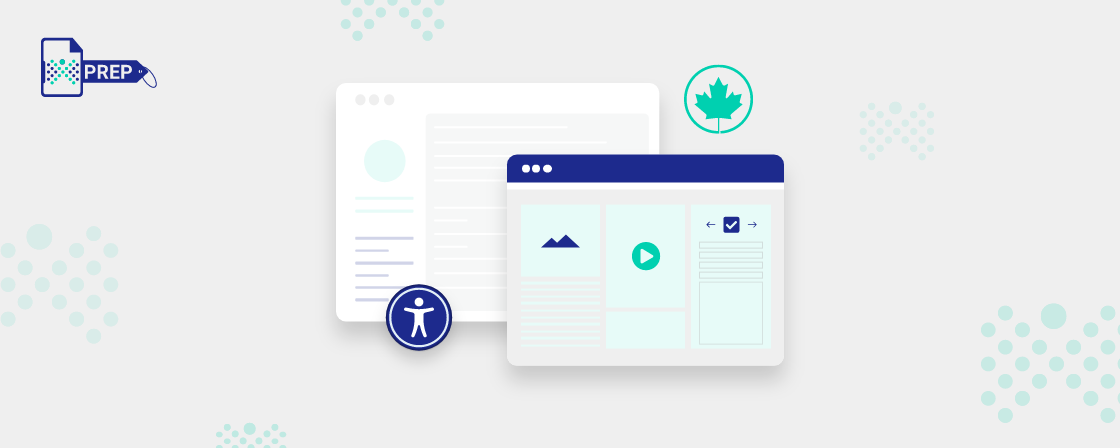What is AODA Compliance?
AODA, Accessibility for Ontarians with Disabilities Act, is a landmark provincial legislation passed in 2005. It sets out a comprehensive framework to ensure that Ontario becomes fully accessible by 2025, requiring both public and private sectors, as well as non-profits, to meet accessibility standards.
As a business owner, you must comply with this law to ensure your organization is accessible. This Act is an improvement upon the earlier Ontarians with Disabilities Act of 2001 and is a significant step forward in achieving a barrier-free Ontario.
What are the 5 Standards of AODA?
- Information and communications (including your business’s digital documents, apps, and websites)
- Transportation
- Customer service
- Design of public spaces
- Employment
Who Must Comply with AODA Standards?
What Happens When One Doesn’t Follow AODA Compliance?
Discrimination against people with disabilities can be damaging both to their well-being and an organization’s reputation, and non-compliance with the Accessibility for Ontarians with Disabilities Act (AODA) can lead to hefty financial penalties. For individuals, a fine of up to $50,000 per day or part day can be imposed for any violation. Corporations can face up to $100,000 per day or part day for failing to adhere to the Act’s requirements.
The AODA outlines three distinct categories of violations, each carrying its own penalties. Here is the categorization of non-compliance to AODA Ontario:
1.For Minor Cases
When a particular feature of a website is inaccessible to certain people with disabilities, such as text content being incompatible with a screen reader, these are considered minor violations.
2.For Moderate Cases
Showing a lack of concern for accessibility standards on digital platforms can result in negative consequences and are counted in moderate violation cases.
3.For Major Cases
This category mainly concerns physical or structural issues, but a website could violate a major rule. For example, according to the WCAG’s Success Criterion G19, light flashes on a webpage should be kept to a minimum to avoid triggering seizures in people with certain photo-sensitivity issues. A website with flashing-light features and no way to control them could be seen as endangering users with disabilities or other problems.
How PREP’s Document Remediation Solution Can Help You?
PREP is an AI-enabled technology that makes it easy to import and tag content from PowerPoint (PPTX), Word Document (Docx), or PDF documents. It creates a hierarchical structure based on labels and tags, making it easier for screen reader users or assistive technology device users to navigate. It also allows users to annotate, assign tags, make corrections, and add alternative text (alt text) to images. Moreover, it can check documents for compliance with Section 508, WCAG 2.0, PDF U/A, and ADA.
We provide customized accessibility solutions for organizations and professionals at the most affordable rates! Contact us to learn more!

